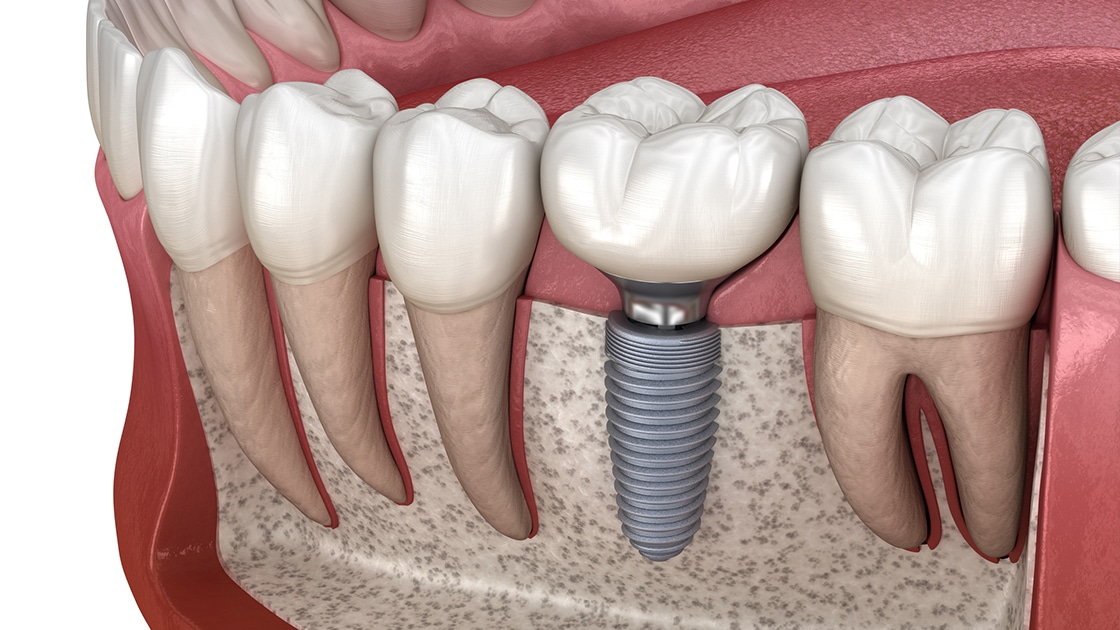A Biased View of Dental Sense
A Biased View of Dental Sense
Blog Article
The Only Guide for Dental Sense
Table of ContentsNot known Facts About Dental SenseSee This Report on Dental SenseGetting The Dental Sense To WorkDental Sense Things To Know Before You Get This
are clinical tools operatively dental implanted into the jaw to recover a person's ability to chew or their appearance. They supply support for fabricated (fake) teeth, such as crowns, bridges, or dentures. When a tooth is shed because of injury or disease, a person can experience complications such as quick bone loss, malfunctioning speech, or modifications to chewing patterns that lead to pain.Oral implant systems include an oral implant body and oral implant abutment and may likewise include an abutment addiction screw. Dental implant vs bridge. The dental implant body is operatively put in the jawbone instead of the tooth's root. The dental implant abutment is generally connected to the dental implant body by the joint fixation screw and extends through periodontals into the mouth to support the connected man-made teeth
(https://www.callupcontact.com/b/businessprofile/Dental_Sense/9469240)Structure of The Dental Implant System choosing dental implants, talk with your oral copyright regarding the potential advantages and dangers, and whether you are a candidate for the procedure. Points to consider: Your total health is an essential variable in identifying whether you are an excellent prospect for oral implants, the length of time it will certainly take to heal, and the length of time the implant might remain in area.
Smoking cigarettes might affect the healing process and lower the long-lasting success of the dental implant. The recovery process for the dental implant body may take numerous months or longer, during which time you normally have a momentary abutment instead of the tooth. the dental implant procedure: Carefully adhere to the dental health instructions provided to you by your oral supplier.
Fascination About Dental Sense
Implant failing can result in the requirement for one more surgery to fix or change the dental implant system. Restores the capability to eat Brings back cosmetic look Helps maintain the jawbone from reducing because of bone loss Preserves the health and wellness of the bordering bone and periodontals Aids maintain adjacent (nearby) teeth stable Improves quality of life Damages to surrounding natural teeth during dental implant placement Injury to the surrounding tissues during surgical procedure, such as sinus perforation Injury throughout surgical treatment (as an example, crack of surrounding jawbone) Inadequate feature, such as seeming like the teeth do not attack with each other typically A feeling that the tooth is loosened or turning in position resulting from a joint screw loosening Implant body failure (looseness of the implant body) because of systemic infection, which may be most likely in people with unrestrained diabetes mellitus as a result of regional infection in bone and periodontals supporting the dental implant body because of delayed recovery, which may be a lot more likely in people who smoke Trouble cleansing the gums around the implant, resulting in inadequate dental health Neglected gum disease Post-surgical tingling as a result of nerve impingement or damage Constantly alert healthcare service providers and imaging service technicians that you have oral implants before any magnetic resonance imaging (MRI) or x-ray procedures.
FDA is not aware of any kind of adverse occasions reported for MRI or x-ray procedures with oral implants. Oral implants systems are normally constructed from materials that adhere to international consensus requirements of the International Organization for Standardization (ISO) or ASTM International. These criteria have details of what makes a secure product.

An oral implant is a framework that replaces a missing tooth. With screw-like devices, the specialist inserts a dental implant into the jawbone, and it functions as an anchor for an artificial tooth, called a crown. A device called a joint attaches the fabricated tooth to the dental implant. The crown is customized to fit the person's mouth and match the color of their teeth.
The Only Guide to Dental Sense
Some individuals are not qualified for dental implant surgical procedure. It is for oral cosmetic surgeons to operate people with: severe illnessuncontrollable metabolic diseasebone or soft tissue condition or infectionIf these problems are dealt with, a person can have the surgical procedure. In, dental specialists avoid running on individuals with: If individuals with any one of the above undergo dental implant surgical treatment, there is a greater danger of the implant failing.

Dental implant surgical procedure is a tailored procedure. It's not the very same for everybody. The adhering to gives a basic overview of what you can expect your dental expert, dental cosmetic surgeon, periodontist or prosthodontist to do: Put the implant surgically. Provide you time to recover. Affix the blog post and final crown, click here to find out more bridge or denture.
Next, your specialist will thoroughly position the oral implant right into your jaw. Finally, your cosmetic surgeon will certainly rearrange your gums and close the incision with stitches. If your implant is near the front of your mouth, your dental practitioner will make a momentary tooth for you to use up until you recover. This way, you won't have a space in your smile while you recuperate.
6 Easy Facts About Dental Sense Shown
Your copyright can inform you what to anticipate in your scenario. During the healing stage, your jawbone ought to fuse to the oral implant. This process, called osseointegration, is vital for stability and long-lasting success. This procedure can take anywhere from 3 to nine months. In some situations, it might take much longer.
When your dental implant heals, your dental practitioner can connect the abutment (small port message) and your last repair (crown, bridge or denture). This usually takes regarding one hour to complete and may need a second small surgery. You shouldn't feel any type of pain throughout your oral implant treatment since your service provider will certainly utilize medication to numb your periodontals.
Report this page